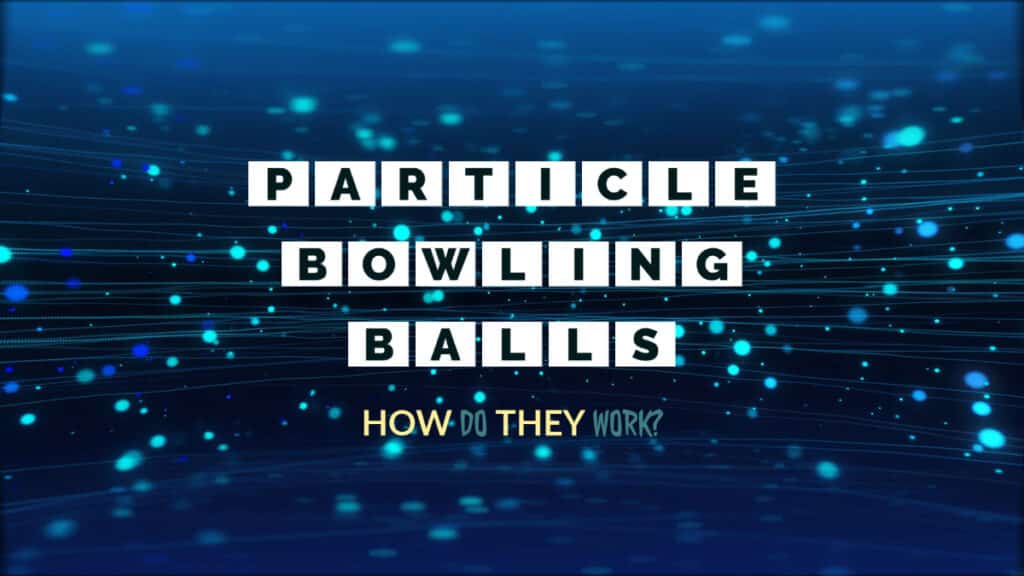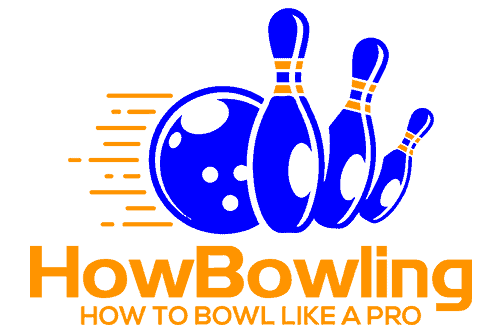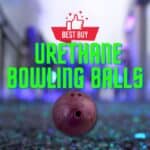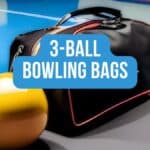When you have been bowling for ages, and you feel like you have mastered the art of hooking and spinning the ball, it is time you learn about Particle Bowling balls and the skill required to throw a particle bowling ball with all the finesse in the world.
This must be making you wonder, what are Particle Bowling Balls, and how do they behave? If that is what you are thinking about, you are in the right place because that is precisely what I’m here to tell you.
In this article, I will talk about Particle bowling balls, how they work, when to use them, and the material used to make them. I will also talk about cleaning and resurfacing particle bowling balls, so make sure you read this article until the end if you want to increase your knowledge and your bowling arsenal.

What are Particle Bowling Balls?
Particle Bowling Balls are bowling balls that have a particle coverstock on them. The coverstock material is the outer layer of a bowling ball that comes into contact with the lane as the bowling ball is thrown onto the bowling lane to knock the pins.
What is significant about Particle Bowling Balls is that they are often termed as Snow tires with chains, implying that Particle Bowling Balls are incredibly durable and frictional in their approach. These balls provide a lot of roughness and bump on their texture and dig into the lane.
No matter how oily the lane might be, with the help of a particle bowling ball, you can get the most hooking potential and spinning motion of a bowling ball to get your desired shot.
This type of coverstock is most popular among PBA professionals and some intermediate players as well. Still, beginners should stay as far away from particle bowling balls as possible because they are tough to control and require a lot of skill to throw and use in a game effectively.
When to use Particle Bowling Balls?
A commonly asked question related to particle bowling balls is, when can I use a particle ball, or what kind of situation calls for a particle bowling ball in general?
Well, there are many conditions and particular situations that call for a particle or proactive bowling ball. You need to be familiar with them. So let’s take a look at some major uses of particle bowling balls.
The lane is an oil grave
If the lane conditions are terrible and there is a lot of oil almost everywhere on the bowling lane, dealing with it using a urethane or even reactive ball can be difficult. In such a situation, using a particle ball is best because it provides the most friction and digs into the lane even if there is a lot of oil.
You need intense pin action
The better the friction on the ball, the less it will move after the collision and the more the pin action you will get. So, if you need intense pin action and think of getting better pin action to knock pins far away from each other to get a spare, then using this ball would be wise if you are skilled enough.
Incredibly Professional and Skilled Bowler
That point brings us here – skill. Skill is essential if you are ever going to lay your hands on a shiny but bumpy particle ball. It would help if you were professional enough to know how to use a particle ball and the intense hooking ability to knock all the pins the right way.
Miraculous Hook Needed
Let us say you have knocked a few pins already, but you are in a sticky situation where the remaining pins are standing far away from each other. In such a case, you would need either great pin action or an amazing hook that gets both of the pins right; well, both these cases would require you to use a particle bowling ball effectively.
What are Particle Bowling Balls Made of?
Unlike plastic bowling balls, particle bowling balls are not very light and smooth. Instead, they are primarily bumpy and rough when it comes to the texture, and they are also usually heavier.
This is simply because particle bowling balls are made of a material mixture of small particles and reactive urethane. The combination makes for a very dense and thick outer layer or coverstock that provides excellent friction.
Using many forces to throw the ball and getting it to spin and hook right is a task only a few professionals can accomplish. Now, the particle ball is quite stigmatized and considered difficult to control.
But if you know your bowling balls and how to control them, you will not have much difficulty controlling particle bowling balls either. All you need is persistence and practice.
Cleaning Particle Bowling Balls
Particle bowling balls, when users have been through oil and dirt to prove successful and get you impressive strikes, make sure you keep them well cleaned and maintained if you want them to last a long time to come.
You might be wondering how exactly do I clean a particle bowling ball? Well, I have got the perfect step-by-step process you need to follow, so make sure you do all these steps the right way.
- If your particle bowling ball is dirty, make sure you clean it in an environment with a lot of space.
- You are going to gather all the things you need. Take a microfiber cloth, soap, hot water bath, polish, and the works. These are the things that are going to come in handy.
- Now, you will take the piece of cloth and clean the dry bowling ball to make sure any dirt and smudges are taken care of before the cleaning process begins.
- Put the particle bowling ball in a bath of hot water and then use a bit of soap to wipe all the sides of the bowling ball. Once that is done, let it soak in the water for a while.
- After 10-20 minutes, take the ball out and rub it with a clean cloth to dry and keep it smooth. The shine might have gone by now, but we have just the solution for that.
- You will spray the polish onto the bowling ball and make sure you rub it so the shine is evenly distributed. Then keep the bowling ball in a different place to dry.
- Once the ball has dried, you have got yourself a clean and fresh particle bowling ball. Use it to your strengths, and you are going to have a blast playing with it.
How to Resurface Particle Bowling Balls?
Resurfacing is the process of reshaping the bowling ball when it seems roughed up and at times cracked on the coverstock. It usually requires a sanding machine, but homemade DIY machines work too.
Typically, resurfacing is an easy job when you have a light ball like urethane or plastic, but the approach needs to be a little bit professional regarding particle bowling balls. So here’s what you’re going to need to do.
- Set up your sanding machine – First off, you will make sure you have cleaned the sanding machine and that it is ready for the bowling ball to be placed.
- Gather things – You will need the bowling ball to be resurfaced and sanding paper and gloves to make sure the process is safe and effective.
- Place the ball on the machine – Take your bowling ball and gently place it onto the sanding machine before you plug the sanding machine on. Also, make sure to clamp the ball.
- Sand the Ball – Now, you will take the sanding paper and slowly start sanding the edges to make sure the resurfacing is good and it works well at the end.
- Stop and Look for Improvements – Take the plug out and check if the bowling ball is looking better. Continue the process until you are satisfied with the resurfacing of the bowling ball.
- Polish the Bowling Ball – Once the bowling ball is resurfaced, the texture of the particle ball will be sandy and grainy, and we do not want that. Make sure you use a polish spray and completely polish the bowling ball to shine and throw perfectly.
Conclusion
Particle bowling balls are not everyone’s cup of tea. It would help if you were super-skilled and professional in hooking and spinning the ball to move around and strike with a particle ball. A beginner will not be able to move a particle ball around and get it to perform well.
But once you get the hang of it, a lot of sticky situations where the lane conditions might be out to get you, you will be able to get out of unharmed. In this article, we looked at what particle bowling balls are made of and how to clean them, and other information that might be useful for a bowler.
I hope you learned a lot from this article and that you will have a fantastic time bowling. Have a great bowling experience!




